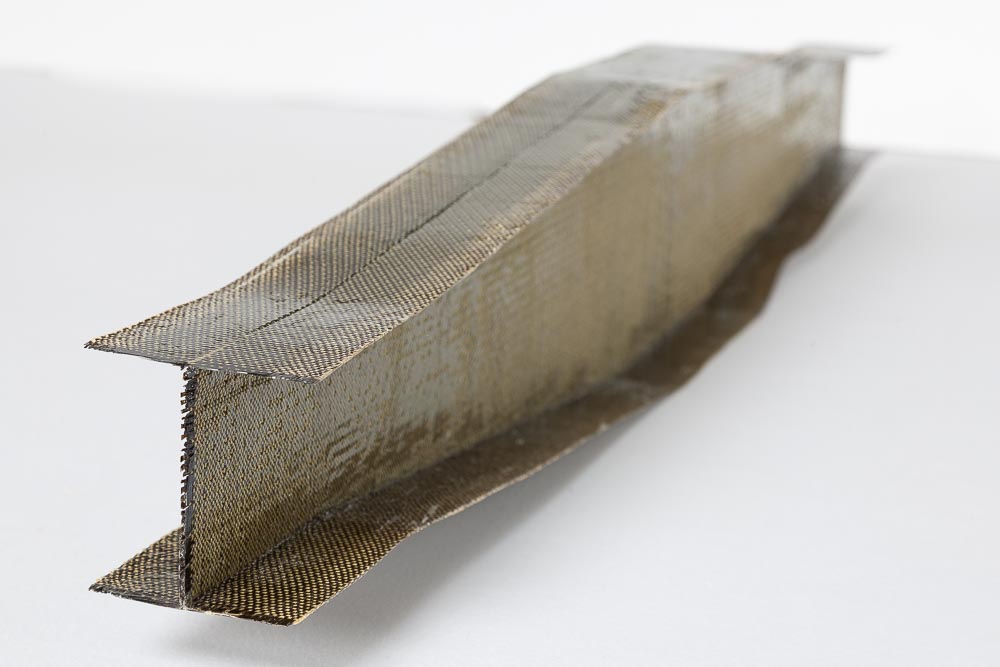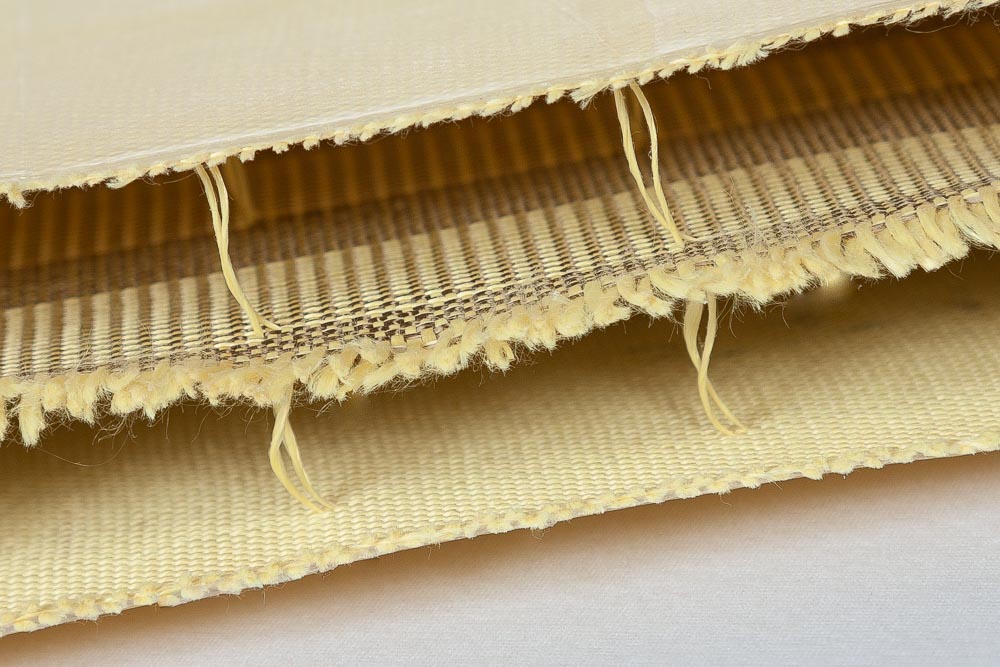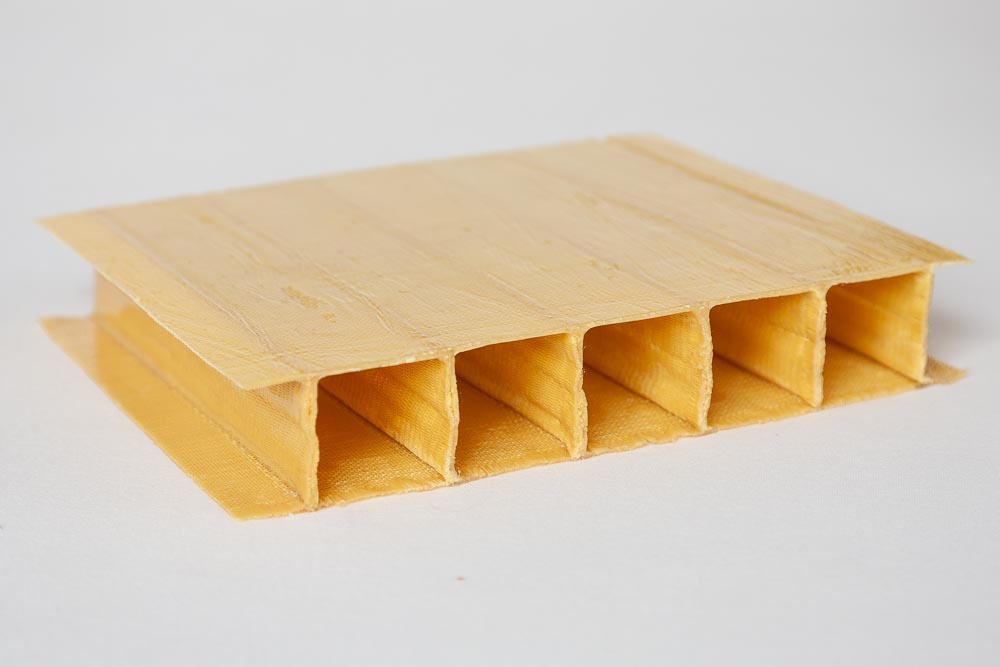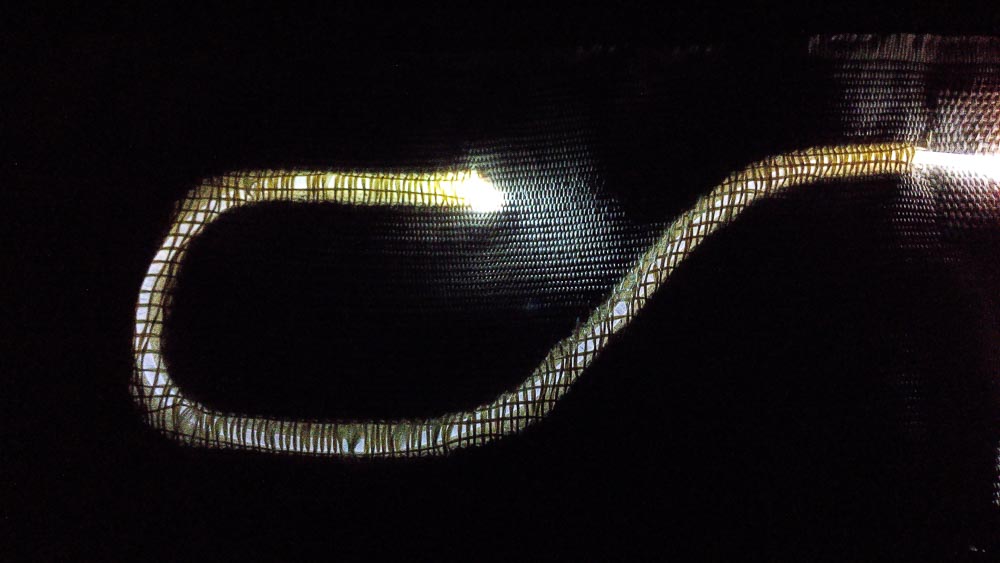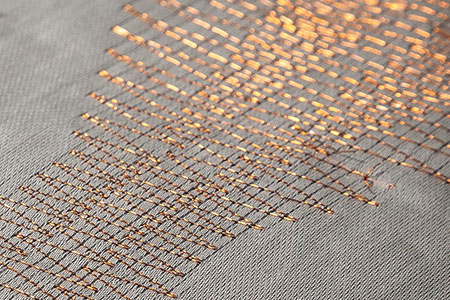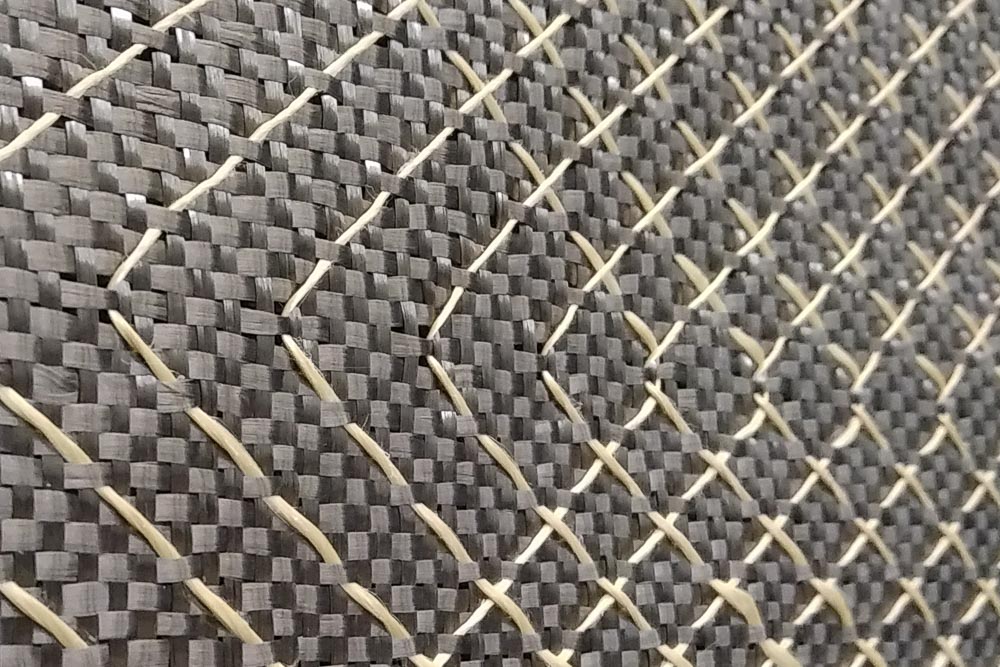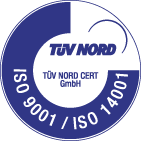
Materials
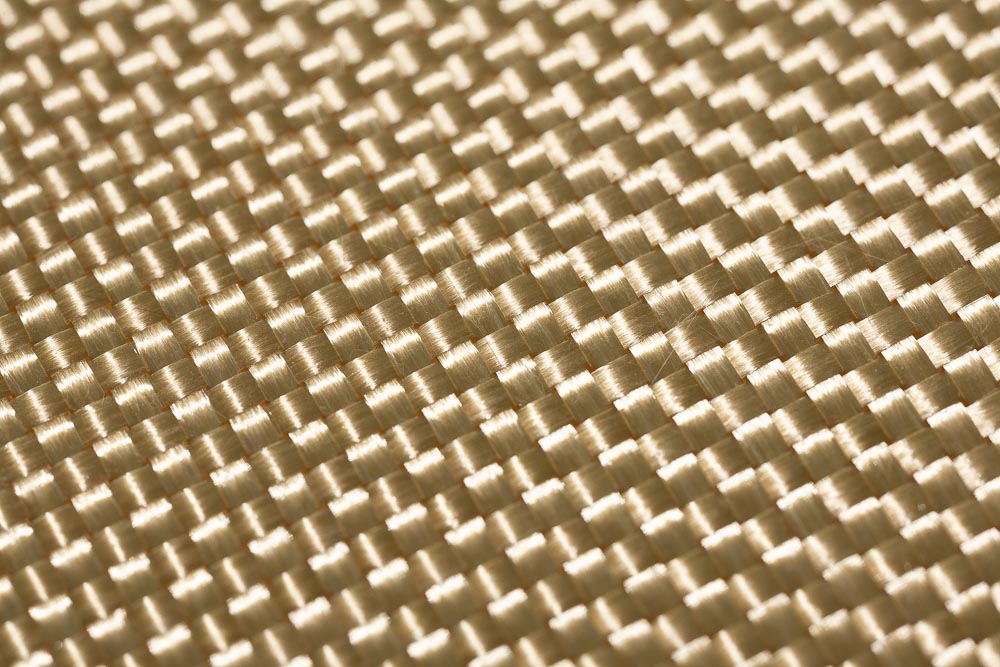
Aramid fibres are long chain hydrocarbon polyamide strands consisting of a minimum of 85 % peptide bonds which must be linked to two aromatic nucleases.
Types of aramid fibre:
-
Meta-aramides ( metaphenylene-isophthalamides, abbreviated as MPIA) , with excellent thermal resistance and electrical insulating capabilities.( e.g., Nomex®)
- Para-aramides (p-phenylene-terephthalamides, abbreviated as PPTA) with substantial tensile strength and a higher elasticity modulus.( e.g., Kevlar®, Twaron®)
Aramid fibres can be processed with all conventional reactive resins and thermoplastics.
One of the major advantages of aramid fibres consists of high tensile strength at low specific weight. Aramid, resp. para-aramid fibres( higher tensile strength and higher elasticity modulus) are known primarily under the brand name KEVLAR® or TWARON®.
Selected types of Kevlar fibres and their use
Kevlar 29 - the most used fibre for protective clothing, bulletproof vests, ropes, composites and as a substitute for asbestos.
Kevlar 49 - has a larger module than glass fibre. Kevlar 49 is mainly used in the aviation industry.
Kevlar 129 - compared to Kevlar 29 it has a 15-20% greater strength and a 30 – 35 % larger module. This type of Kevlar is especially suitable for ballistic applications (bulletproof vests).
Aramid fibres are used either alone or in combination with inorganic fibres:
- Aramid + Carbon (components in the automotive industry)
- Aramid + glass (bonnet)
- Aramid + basalt (serves as a complete substitute for hybrid structures instead of glass)
Aramid fabrics have excellent abrasion and chemical resistance. The absorption of shock energy ( caused by e. g. a shot) is 4 times higher than that of conventional polyamides.
Application
Hybrid Fabrics
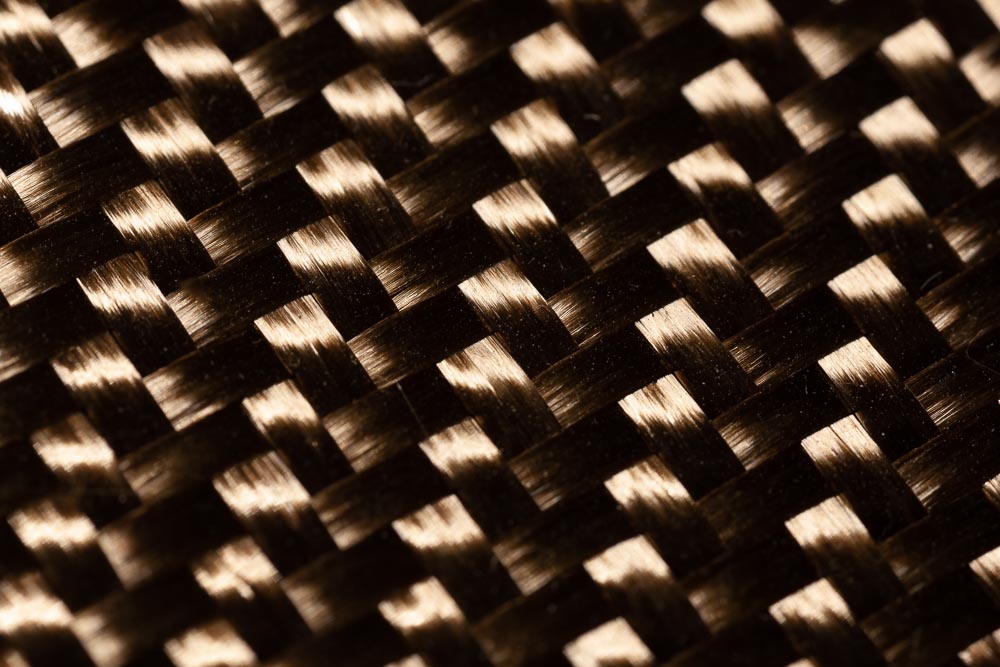 Basalt fibres make excellent thermal insulators. Basalt fibres are resistant to fire and are therefore non-flammable. They can be used on a long-term basis at temperatures up to 700 °C
Basalt fibres make excellent thermal insulators. Basalt fibres are resistant to fire and are therefore non-flammable. They can be used on a long-term basis at temperatures up to 700 °C
Basalt fibre provides three times better thermal insulation than fibres made from asbestos. Compared to glass fibres, basalt fibres have a wider operating temperature range.
The advantages of basalt fibre consist in its availability and the low cost of the raw material. Thanks to its low cost, basalt is widely used in a number of technical applications.
Basalt as a material presents particular advantages when it comes to resistance against:
- Water
- Most alkali
- Organic and inorganic acids
- Organic solvents
- UV radiation
- Most chemicals and other aggressive substances
Application in Industry
Basalt is usually used to make cast products (e.g. tiles and pipes) from liquid alloys with increased abrasion resistance as well as good thermal and chemical resistance. In the form of short fibres, it is mainly used for insulating purposes (Rockwool). It was only after continuous spinning technology was mastered that basalt multifilament silk (roving) started to be used to a greater extent.
Basalt fibre and basalt fabrics made from it are a suitable alternative in areas where glass or asbestos fibres have been commonly used. The production and disposal of basalt fibres does not present such a burden for the environment.
Basalt vs. Glass
Glass fibres are in general resistant to fire as well as to a number of chemicals. The presence of moisture in the fibres, however, strongly reduces their strength (basalt does not absorb moisture). Another disadvantage is their low resistance to static long-term stress (static fatigue). The softening point is around 700 °C and the maximum temperature for long-term use is only 450 °C
In fact, basalt can be successfully used instead of glass fibres, for example, in the production of mesh fabrics for the building industry. As reinforcement, basalt can be used to make composite cores for various technical products.
| GLASS | BASALT | CARBON | |||
| E | S | AR | Toray | ||
| Density [g/cm3] | 2,6 | 2,46 | 2,7 | 2,68 | 1,76 - 1,93 |
| Modulus [Gpa] | 72 | 87 | 73 | 90 | 230 - 588 |
| Tensile strenght [Gpa] | 3,44 | 4,89 | 3,24 | 3,58 | 2,74 - 6,37 |
| Elongation at break [%] | 4,78 | 5,62 | 4,44 | 3,98 | 0,67 - 2,17 |
| Heat resistant [°C] | 846 | 1056 | 773 | 1100 | |
| Approximate price | ≈ € 2 | ˃ € 12 | ˃ € 10 | ≈ € 4 | ˃ € 20 |
Application
Hybrid Fabrics
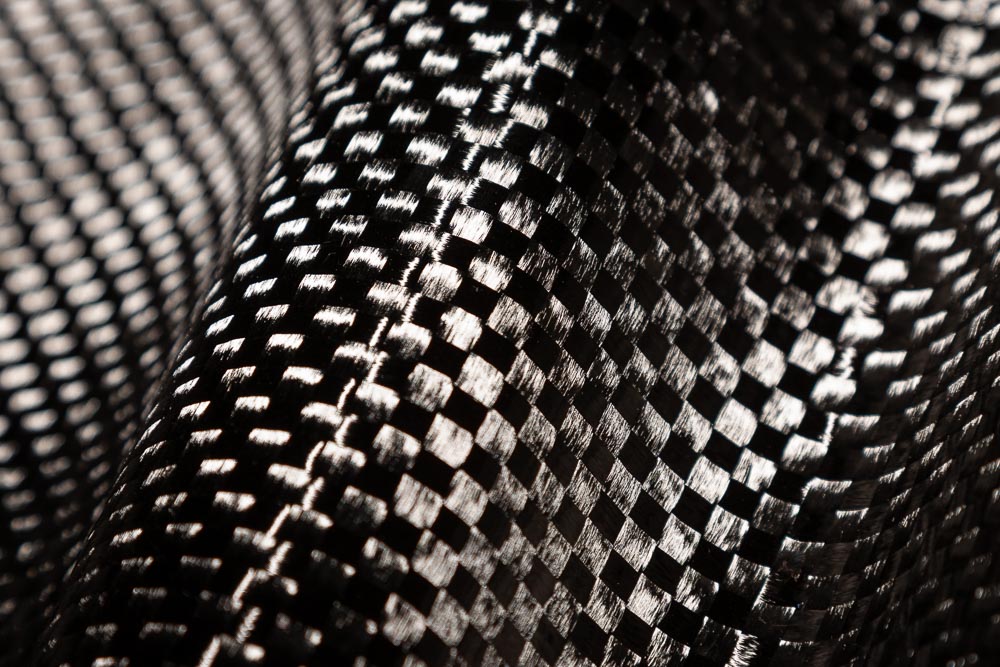 Carbon fibres are technical fibres between 5 and 10 μm in diameter, consisting predominantly of carbon atoms (approximately 90%, the rest being nitrogen, oxygen and hydrogen) ,which are joined together in microscopic crystals forming the fibre itself. The method of producing carbon fibre varies depending on the precursor used. Therefore there are different manufacturing processes for PAN-based fibres, pitch fibres, mesophase fibres, viscose and whisker-like fibres made by catalytic decomposition of gaseous hydrocarbons.
Carbon fibres are technical fibres between 5 and 10 μm in diameter, consisting predominantly of carbon atoms (approximately 90%, the rest being nitrogen, oxygen and hydrogen) ,which are joined together in microscopic crystals forming the fibre itself. The method of producing carbon fibre varies depending on the precursor used. Therefore there are different manufacturing processes for PAN-based fibres, pitch fibres, mesophase fibres, viscose and whisker-like fibres made by catalytic decomposition of gaseous hydrocarbons.
It is possible to produce a range of fibres from high strength fibres with a medium elastic modulus, a high elastic modulus or all the way to an extremely high elastic modulus. Carbon fibre is considered to be the best reinforcement for composites, especially for a material called carbon fibre laminate, where low weight as well as high resistance to dynamic stress is required. Other features include high corrosion resistance along with good electrical and thermal conductivity. Carbon fibre is also often combined with Kevlar which is added for better bending stiffness. The resulting composite has better impact properties.
Types of fibres
We currently distinguish:
Lower specification carbon fibre
- Tensile strength <1000 MPa, tensile modulus <100 GPa
- It is used as thermal insulation, electromagnetic shielding, removal of electrostatic charges in surface layers of composite structures.
High performance carbon fibre
- Tensile strength of 3.5 - 7 GPa, modulus 230 - 930 GPa
Depending on the specific mechanical properties, this group is further divided into:
- High tensile or high tenacity (HT fibres)
- High modulus fibres (HM fibres)
- Intermediate modulus (IM fibres)
- Ultrahigh modulus (UHM fibres)
Application
Hybrid Fabrics
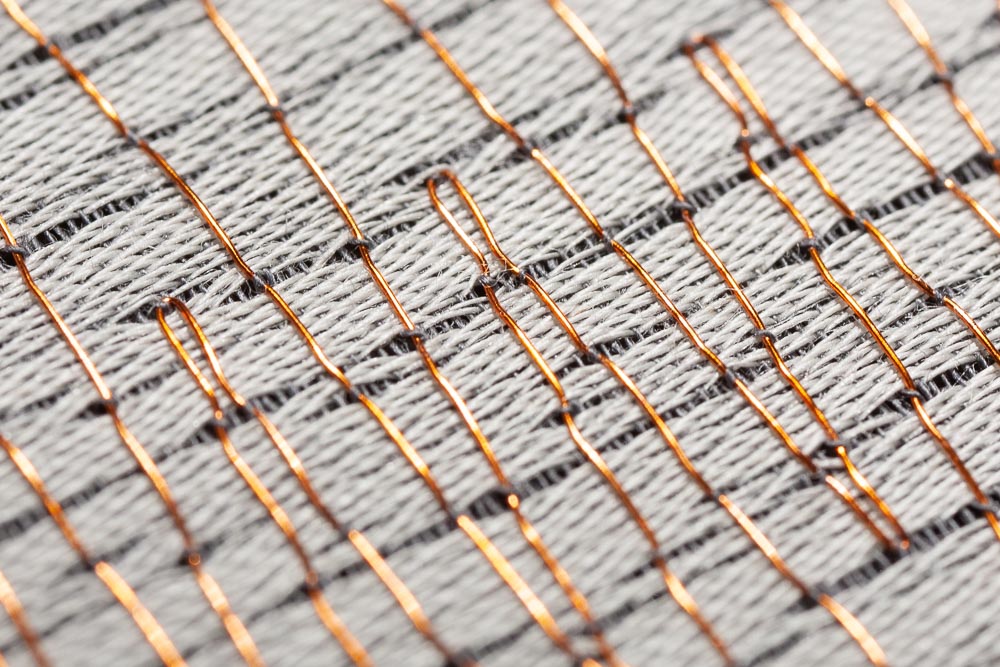 This generic term can be used to describe virtually any "wire". The basic principle consists in achieving the required properties (surface or shape heating, shielding against certain wavelengths of the electromagnetic spectrum, static charge discharge ...) by using a suitable conductor.
This generic term can be used to describe virtually any "wire". The basic principle consists in achieving the required properties (surface or shape heating, shielding against certain wavelengths of the electromagnetic spectrum, static charge discharge ...) by using a suitable conductor.
One of the most common conductive materials is copper wire or copper thread. Copper, being the second best conductor, achieves excellent results with minimal losses. Further examples of conductors are stainless steel (such as stainless steel wire or spun stainless steel fibres- Bekinox®) ,carbon roving, etc.
It is necessary to know the final application in order to choose the right conductive material. There is no woven conductive material which can be used universally. One type of material may be successfully integrated into the fabric as a heating element, while another may work better as a shield against electromagnetic waves. The material can be applied in the basic directions (warp and weft) or at various angles (using Open Reed Weaving) . Last but not least, other parameters are the diameter of the conductor, the shape in which it is woven, etc .
Adding conductive tracks to the fabric can also be done to increase the stiffness, strength or even dimensional stability of the fabric.
Application
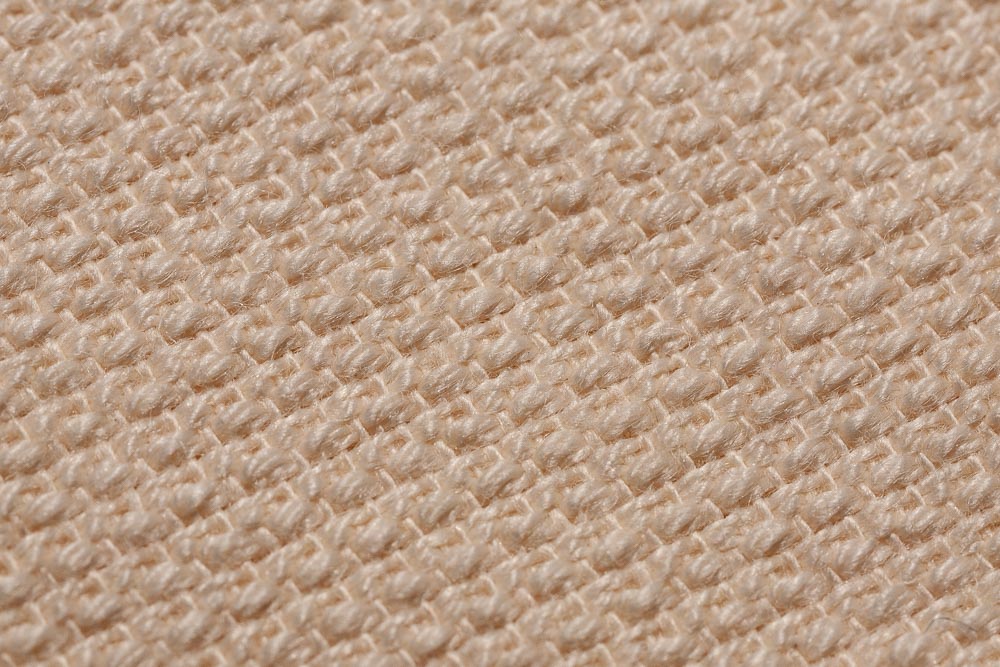 Cotton is a natural material obtained from cotton seeds. Thanks to its properties it is widely popular especially for clothing.
Cotton is a natural material obtained from cotton seeds. Thanks to its properties it is widely popular especially for clothing.
Cotton, as a purely natural material, can play a big role in today´s mindset when sourcing materials for technical and smart fabrics because it is an easily recyclable and eco-friendly material. Cotton yarn can also play its part in composite elements. It can also serve as a fixator for spatial structures where smooth materials can be too slippery. When it comes to smart textiles, cotton can be used as a carrier of smart electronics (heating, sensors, etc.) .
Application
Hybrid Fabrics
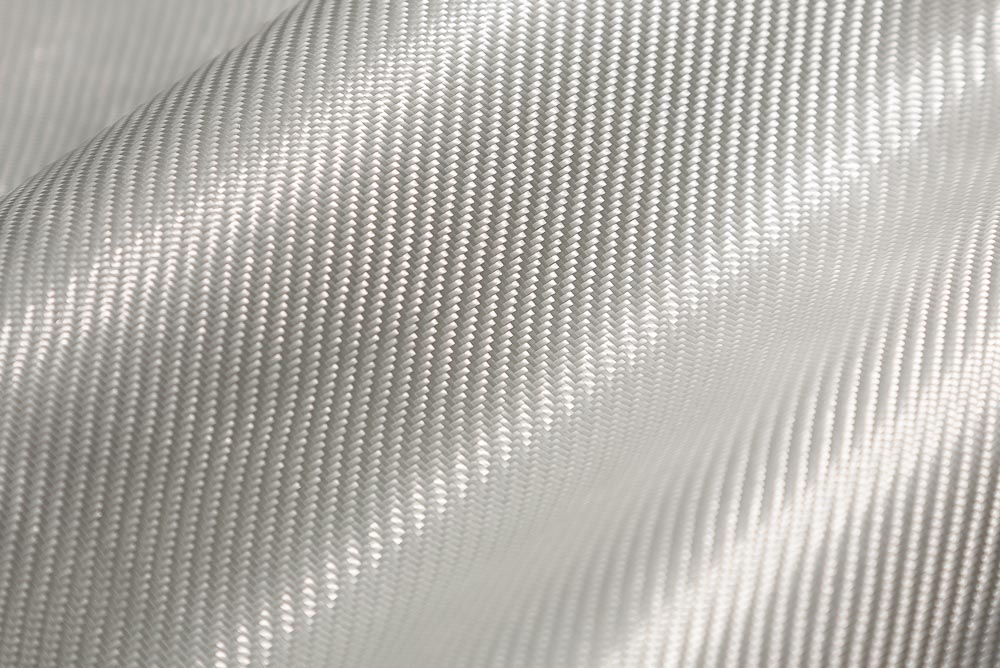 Polyester fibres (PES) are synthetic products in the same category as polyethylene terephthalate (PET), polybutylene terephthalate (PBT) and polytrimethylene terephthalate (PTT) textile fibres.
Polyester fibres (PES) are synthetic products in the same category as polyethylene terephthalate (PET), polybutylene terephthalate (PBT) and polytrimethylene terephthalate (PTT) textile fibres.
Most of our polyester fibres are made of polyethylene terephthalate (PET).
One of the most important advantages of polyester fibres is their:
- High resistance to light, weather and microorganisms.
Polyester is a relatively stiff fibre compared to Polyamide. It is used in cotton, wool and viscose blends for carded and combed yarns. Polyester increases the product´s stiffness and makes it more crease-resistant. Many properties can also be easily improved by chemical or mechanical processes (for example to increase the strength of tire cords, conveyor belts and sewing thread) .
Application
Hybrid Fabrics
Headquarters
Přadlácká 89
550 01 BROUMOV
Czech Republic
Call centre:
+420 491 502 300
(7:00-15:00 CET)
callcentrum@veba.cz
Copyright
© VEBA, textilní závody a. s.
All rights reserved






